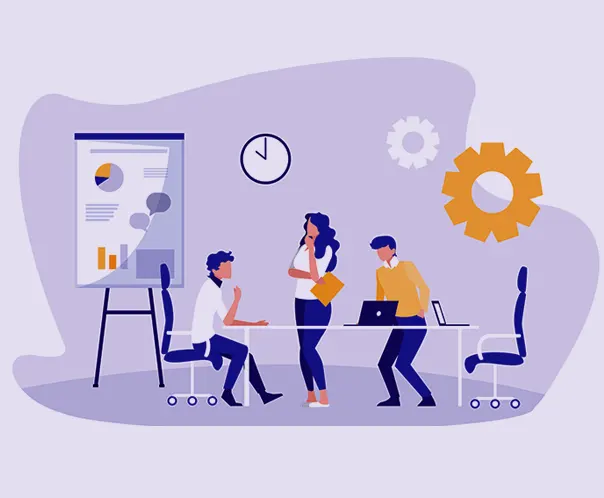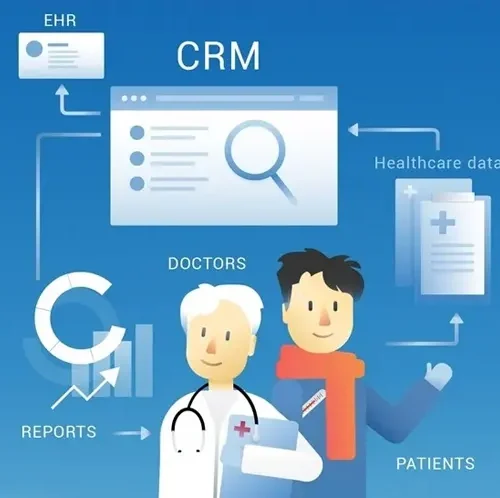Neuroscientific research claims that mindfulness, trust, and being listened to at the moment can be used to create a high-trust & high-performance workplace. That generates disagreements, minimizes productivity, rise issues, and drives backward-looking innovation. To create strong foundations of organizational behaviors among coworkers in real-time listening practice and shapes workplace culture in such a way to urge a great place to work. Pride is a moment to celebrate all the variations in organizational behavior that drive us to a wonderful place.
It can lead with trust allowing your team to improve performance, share ideas, and get more done. Hence, it can open the door for better cooperation and increased creativity.
Research shows that when people trust their colleagues, they are more creative, more productive, and less stressed. If this is true in your workplace, how could you build a listening culture?
Such workplaces – which allow for open, honest, and direct feedback — are a rarity. This leads to an erosion of confidence in leaders, and often to a lack of trust. In these cases, employees feel there is no room for them to make mistakes and never learn from their mistakes.
Create a listening culture by expanding the latest neuroscience findings. Using this free guide depicts how great leaders build a culture of trust with employees.
What the Hell Are You Doing Now?
A good corporate culture is built on having an open dialogue and polite behavior with employees. When nobody is listening, they fill being disregarded, being overworked, and miscommunication, which leads to rapid mistakes.
What makes a good working environment? It isn’t just about having the high-tech office space, better remunerations, amenities, and technology.
No. Employees will feel empowered when they know their ideas are being heard and taken seriously, which will translate into better performance.
The good news is that employees who feel their voices are heard are four times more likely to perform their best work.
Encourage employees to voice their opinions, trust their judgment and give them the freedom to decide. The more they feel that they can be heard and trusted, the more empowered they will become.
In the modern business world, listening to your employees has become not just a nicety, but essential skill. Employees who feel they have a voice are more motivated and perform better.
“Trust is the foundation of well-working relationships, but it’s hard to find. We’ll show you a better way: one that can improve your business, transform your culture, and get you more engaged employees!”
How to Created Listening Culture?
Many organizations have a culture of not listening to their employees, which creates an overall unhealthy relationship between the employee and the organization. While it might take more effort, if you are serious about wanting your employees to feel like they can give you feedback on what’s circulating in their minds, thoughts of expressions, etc.
As running successful management, value every feedback and take it on a serious note. That pledge to establish a culture of listening in an organization by starting with focus group discussions and one-on-one interviews opens up to learn what’s on your employees’ minds. And be serious about it.
“Your thoughts are important to us and your participation is significant! If you’re interested in having your voice, please share on this platform”, something like that.
Whereas, the annual employee review report is a commonly used tool of judgment to evaluate and conduct your employees’ overall relationship with your organization.
That has embraced the best practice of employee listening. It has been increasingly recognized as an important foundation for employee retention and performance buildings.
Establishing a one-on-one cadence with your employees is the only way for you to know what’s really important to them in their job and personal life.
One-on-ones cadence is the most important management tool. It is time to shift from employees focusing on projects and processes to your employees focusing on their goals and dreams. You can’t build a team of champions without acknowledging their dreams, fears, and goals. And then, you need to make sure that your people feel safe sharing their ideas.
How does trust important in leadership and organizational behavior?
Good leaders are those who build trust with their followers.
Trust is the key ingredient that connects the leader to her/his admirers and strong the efficiency of organizational and leadership success. . . .the foundation of a great workplace is shaped by organizational credibility, respect, and fairness which make the foundation of hope.
Great leaders examine their employees as well, just like treating their clients/customers. This could reduce biases.
Credibility ensures that leadership is open and honest with employees, while respect ensures that employees feel they can express their opinions. Fairness means treating all employees fairly without bias and without favoritism.
High-trust companies’ employee reports are as follows:
60% get their career satisfaction
50% increased their productivity
66% increased their team’s unity
Creating a trusting environment by being a listening culture is the key to building a great workplace experience.
When trust is lacking in a workplace, it can affect every employee’s productivity and well-being. As leaders, you must be able to build trusting relationships with your employees so that they are committed to their jobs and the company.
Behavioral factors of high trust:
A report revealed by a Harvard Business survey research defined the three behavioral factors of high trust. It showed that basic useful factors let served:
A. The power to build and keep up positive, bilateral unit relationships
B. The presentation of skillfulness and opinion
C. The cohesiveness of word and deed
Hence, another survey advises that business leaders and high trust is a three-pronged formula. It comprises the power-trust, integrity-trust, and kindness-trust in equalized ratios.
The building blocks of trust are clear communication, transparency, relationship-building, and competence. These characteristics are often grouped together as “competence,” but it’s important to note that each one is an essential part of building trust.
Clear communication- a lack of clear communication can lead to misunderstandings and miscommunication that can cause problems both in the organization and with customers. When employees feel like they aren’t being heard or listened to, they may be more likely to withhold information from managers about issues that need addressing or even hide them from other team members altogether.
Transparency – Transparency means being open about what you’re doing and why—whether it’s sharing information about your goals or explaining why your decisions were made. This can help employees understand how decisions were made and what impact those decisions have had on them personally or professionally. It also makes it easier for managers to make informed choices on behalf of their teams when making decisions based on facts instead of hunches or intuition alone!
Honesty – Honesty is another key part of building trust within an organization because it means being honest with yourself as well as others around you—especially when dealing with difficult situations like layoffs or disciplinary actions at work!
Competence – the person or people who can do the job at hand.
Relationship-building – is the process of acquiring social connections. This is a significant business’ soft skill that is based on position, determining, close communications, and sustaining organizational relationships.
EndNote:
The key to sustaining trust is to continue to build it, nurture it, and cultivated it again in the organizational behavior model. We can help you do that with Maven Technology, a leading provider of high-trust technology solutions.
The guide to building a high-performance & high-trust workplace starts with communication and belief in the principle of organizational behaviors. We help our employees to build this significant element by providing stellar training, tools, and providing useful resources to our employees.
How do high-trust workplaces help you to feel more connected and engaged? When you work in a high-trust organization, the rewards include having a great workplace culture, higher productivity, and better team effectiveness. Find out how Maven Technology can help your team up to become more empathic and empowering solutions in your soothing High-Performance work environment.





